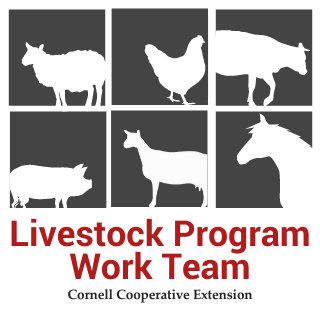Which Hay Is The Right Choice For My Horse?
Lynn Bliven, CCE Allegany County Ag & Natural Resources Issue Leader
It’s that time of year when livestock owners are planning to transition from pasture to stored feeds for the winter. I often receive questions about which is the right grain supplement for horses or ponies, but rarely asked about what the correct forage choice is. To address the question of supplementation we should begin with understanding what is available in the hay we plan to feed as that will make up the majority if not meeting the total nutritional needs of our equine companions.
If you are producing your own hay you may be faced with forage that is not optimal, as making hay is both an art and a science; and we can’t control the weather. If purchasing hay, you want to get the best value for your dollar; buying solely based on price per bale is not necessarily the cheapest route economically or for the health of your horse. In either case, a forage analysis will allow you to match the nutrients available to the needs of your horses.
Not all animals will need top quality forage as long as it is free of dust and mold. A hay analysis is the place to start when balancing the ration as it helps you know the specific amount of various nutrients that are found in the hay you are feeding. This is particularly important if your horse has a nutrition-based digestive problem but also can be more cost effective.
If you’re new to understanding how to sample your forage or read the report, please check out our past webinars on the topic: Hay Analysis for Horses with Karen Jonhson, Senior Field Representative, Cargill discusses taking samples, reading reports, and matching your horse’s needs. Hold Your Horses: Forage Analysis with Sara Fessenden, Dairy One and Lynn Bliven, CCE Allegany County explains the Equi-Analytical testing process and covers factors that impact evaluation of hay quality.
For assistance with sampling or access to sampling equipment, please contact your local Cornell Cooperative Extension office or Regional Team.

